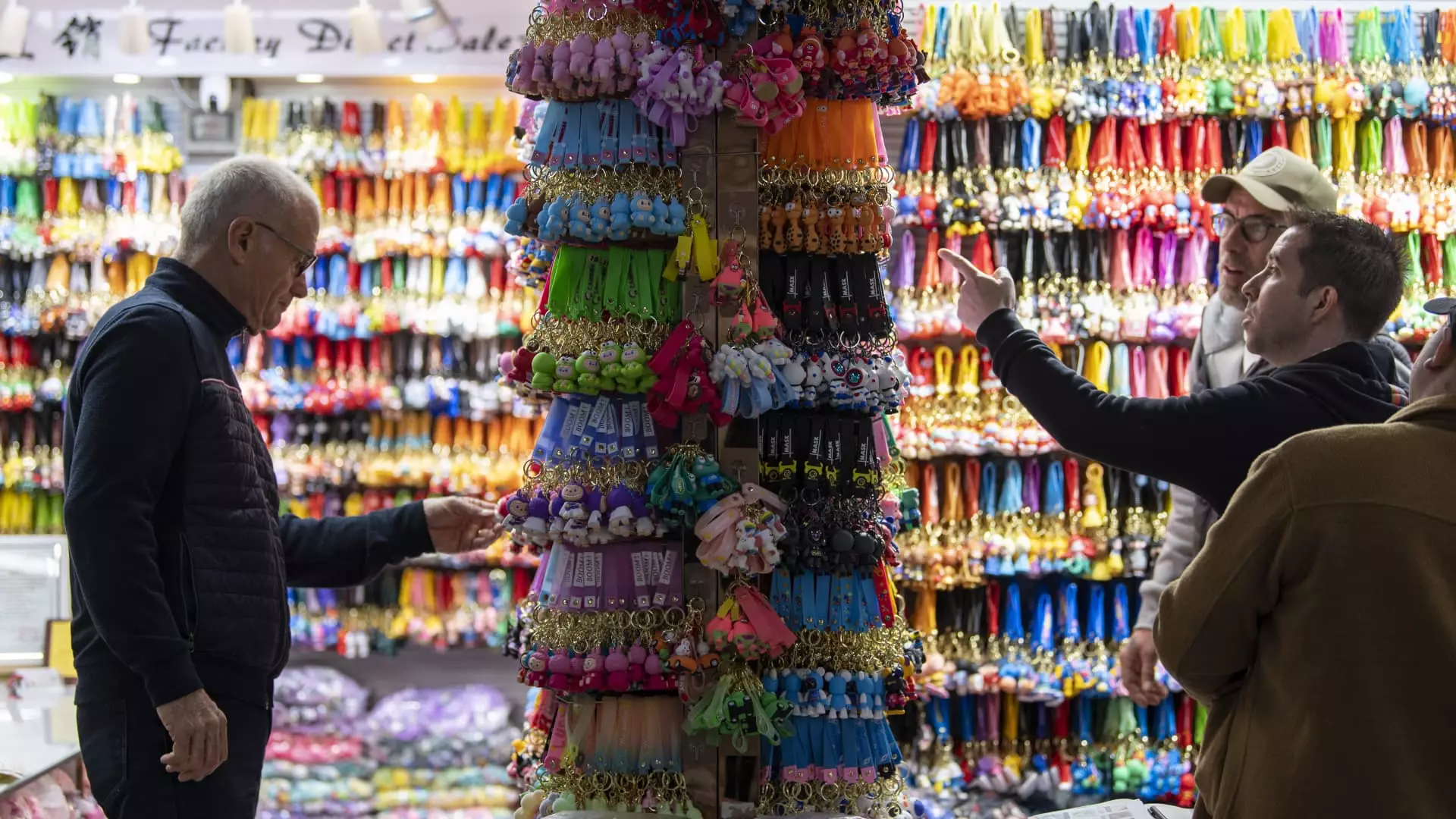As the holiday season looms closer, a familiar phenomenon is once again taking center stage: “Christmas creep.” This retail strategy refers to the alarming trend of Christmas merchandise appearing on store shelves earlier each year, as businesses attempt to seize the lucrative opportunities presented by consumer spending. However, in 2023, this seasonal ritual is threatened by an unsettling new antagonist—tariffs. The repercussions of escalating tariffs on imports, particularly from China, have the potential to cast a long shadow over the holiday shopping season, complicating supply chains and squeezing profit margins in ways that many retailers may not be ready to confront.
Tariffs: The Grinch That Might Steal Christmas
When President Trump announced a series of sweeping tariffs, including a staggering 145% on certain imports from China, retailers experienced a collective shudder. Astute business insiders predicted that this would not simply be an inconvenience; it would manifest as a complex web of complications that could inhibit timely order fulfillment, leaving store shelves achingly bare just when consumer demand peaks. U.S. retailers initially responded by impulsively halting orders, creating cascading delays in production that echoed throughout entire supply chains.
The reality is stark: when production halts in factories manufacturing simple items, like spoons, it doesn’t just halt at the factory floor. The shockwaves reverberate through upstream suppliers of raw materials, like steel, and further back, culminating in a system that has created dependencies on particular timelines and supply chains. Cameron Johnson, a pragmatic industry consultant, underscores the urgency of the situation: “If you don’t start producing in the next couple of weeks, you’re going to start missing Black Friday and Christmas.” When production is paused or rerouted, even temporary trade deals might not suffice; the relevant industries risk becoming petrified in their attempts to revive once-dormant supply lines.
The Irony of Consumer Demand and Supply Chain Fragility
Despite the alarming tariff landscape, many businesses seem to be gambling on the prospect of selling products they can’t yet guarantee will arrive. The irony here is maddening—while retailers tentatively breathe life back into production lines, they may also be unwittingly setting themselves up for a cocktail of overstocked inventories and empty shelves. As U.S. importers attempt to recalibrate to an unpredictable marketplace, the already fragile system of imports from China and other regions faces even greater hurdles.
Analysts estimate that approximately 36% of U.S. imports from China are exclusively sourced from mainland suppliers. Consequently, regional diversification to create a more robust supply chain is not a feasible short-term solution. As Renaud Anjoran of Agilian Technology points out, timelines for manufacturing, testing, and shipping are daunting; ideally, manufacturers ought to begin laying the groundwork months in advance. While some businesses have understandably stockpiled goods, it’s becoming clear that many of them could end up with surplus stock that fails to sell if tariffs remain high. Poor communication between factories and retailers could lead to disastrous miscalculations regarding consumer tastes and holiday shopping trends.
A Risky Game of Timing Orders
In a bizarre twist of fate, U.S. businesses are now left waiting with bated breath, anxiously trying to decipher whether the tariffs will lighten in the upcoming months. There’s hope in the murky air; provisional reports indicate that the Biden administration may be inching toward rolling back certain tariffs. Some manufacturers are thus adjusting their production schedules, banking on a reduction of levies to offset historical price increases. However, this risky game of timing leaves many businesses in precarious positions.
What happens if the tariff relief does arrive? There exists a very real potential for overwhelming supply chains, with factories suddenly inundated with rush orders that arrive all at once, sending shipping costs soaring. As noted by both Anjoran and Johnson, the bottleneck effect could engender a new challenge altogether, creating heightened pressures just as businesses are hoping for a smoother, more fruitful holiday season.
The Human Cost: Retail Jobs Hang in the Balance
Beneath the financial ramifications of U.S.-China trade tariffs lies a more profound consequence—human lives hung in the balance. The retail industry is fueled by countless working-class employees, many of whom could see their jobs endangered if inventories stagnate and sales plummet. The devastation of job loss in the retail sector could ripple across communities, feeding into cycles of broader economic instability.
As tariffs continue to shape the holiday narrative, consumers must also reckon with the significance of their purchasing power. Every dollar spent sends a message, often inadvertently endorsing one retail strategy over another. Are we prepared to confront the uncomfortable truth that our holiday shopping habits may directly risk the livelihoods of workers? This isn’t just about merchandise and profit margins; it’s a narrative about resilience, adaptation, and the interconnectedness of a global economy grappling with self-imposed obstacles.
As the countdown to Christmas accelerates, it remains crucial that retailers, consumers, and policymakers alike acknowledge the complex tapestry of risks at play. The stakes are high, and the consequences of our choices during this season may reverberate far beyond the holiday displays populating our shopping malls.

